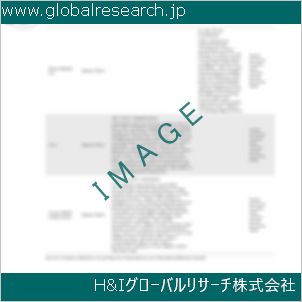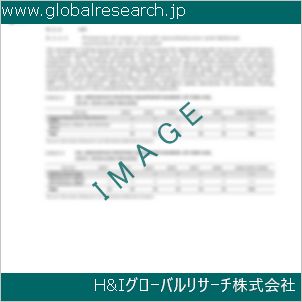Table of Contents
1 Industry Overview of Beryl
1.1 Definition and Specifications of Beryl
1.1.1 Definition of Beryl
1.1.2 Specifications of Beryl
1.2 Classification of Beryl
1.3 Applications of Beryl
1.3.1 Nuclear Application
1.3.2 Non-Nuclear Application
1.4 Industry Chain Structure of Beryl
1.5 Industry Overview and Major Regions Status of Beryl
1.5.1 Industry Overview of Beryl
1.5.2 Global Major Regions Status of Beryl
1.6 Industry Policy Analysis of Beryl
1.7 Industry News Analysis of Beryl
2 Manufacturing Cost Structure Analysis of Beryl
2.1 Raw Material Suppliers and Price Analysis of Beryl
2.2 Equipment Suppliers and Price Analysis of Beryl
2.3 Labor Cost Analysis of Beryl
2.4 Other Costs Analysis of Beryl
2.5 Manufacturing Cost Structure Analysis of Beryl
2.6 Manufacturing Process Analysis of Beryl
3 Technical Data and Manufacturing Plants Analysis of Beryl
3.1 Capacity and Commercial Production Date of Global Beryl Major Manufacturers in 2023
3.2 Manufacturing Plants Distribution of Global Beryl Major Manufacturers in 2023
3.3 R&D Status and Technology Source of Global Beryl Major Manufacturers in 2023
3.4 Raw Materials Sources Analysis of Global Beryl Major Manufacturers in 2023
4 Capacity, Production and Revenue Analysis of Beryl by Regions, Types and Manufacturers
4.1 Global Capacity, Production and Revenue of Beryl by Regions 2019-2024
4.2 Global and Major Regions Capacity, Production, Revenue and Growth Rate of Beryl 2019-2024
4.3 Global Capacity, Production and Revenue of Beryl by Types 2019-2024
4.4 Global Capacity, Production and Revenue of Beryl by Manufacturers 2019-2024
5 Price, Cost, Gross and Gross Margin Analysis of Beryl by Regions, Types and Manufacturers
5.1 Price, Cost, Gross and Gross Margin Analysis of Beryl by Regions 2019-2024
5.2 Price, Cost, Gross and Gross Margin Analysis of Beryl by Types 2019-2024
5.3 Price, Cost, Gross and Gross Margin Analysis of Beryl by Manufacturers 2019-2024
6 Consumption Volume, Consumption Value and Sale Price Analysis of Beryl by Regions, Types and Applications
6.1 Global Consumption Volume and Consumption Value of Beryl by Regions 2019-2024
6.2 Global and Major Regions Consumption Volume, Consumption Value and Growth Rate of Beryl 2019-2024
6.3 Global Consumption Volume and Consumption Value of Beryl by Types 2019-2024
6.4 Global Consumption Volume and Consumption Value of Beryl by Applications 2019-2024
6.5 Sale Price of Beryl by Regions 2019-2024
6.6 Sale Price of Beryl by Types 2019-2024
6.7 Sale Price of Beryl by Applications 2019-2024
6.8 Market Share Analysis of Beryl by Different Sale Price Levels
7 Supply, Import, Export and Consumption Analysis of Beryl
7.1 Supply, Consumption and Gap of Beryl 2019-2024
7.2 Global Capacity, Production, Price, Cost, Revenue, Supply, Import, Export and Consumption of Beryl 2019-2024
7.3 USA Capacity, Production, Price, Cost, Revenue, Supply, Import, Export and Consumption of Beryl 2019-2024
7.4 EU Capacity, Production, Price, Cost, Revenue, Supply, Import, Export and Consumption of Beryl 2019-2024
7.5 China Capacity, Production, Price, Cost, Revenue, Supply, Import, Export and Consumption of Beryl 2019-2024
7.6 Japan Capacity, Production, Price, Cost, Revenue, Supply, Import, Export and Consumption of Beryl 2019-2024
8 Major Manufacturers Analysis of Beryl
8.1 Manufacturer One
8.1.1 Company Profile
8.1.2 Product Picture and Specifications
8.1.2.1 Type I
8.1.2.2 Type II
8.1.2.3 Type III
8.1.3 Capacity, Production, Price, Cost, Gross and Revenue
8.1.4 Contact Information
8.2 Manufacturer Two
8.2.1 Company Profile
8.2.2 Product Picture and Specifications
8.2.2.1 Type I
8.2.2.2 Type II
8.2.2.3 Type III
8.2.3 Capacity, Production, Price, Cost, Gross and Revenue
8.2.4 Contact Information
8.3 Manufacturer Three
8.3.1 Company Profile
8.3.2 Product Picture and Specifications
8.3.2.1 Type I
8.3.2.2 Type II
8.3.2.3 Type III
8.3.3 Capacity, Production, Price, Cost, Gross and Revenue
8.3.4 Contact Information
8.4 Manufacturer Four
8.4.1 Company Profile
8.4.2 Product Picture and Specifications
8.4.2.1 Type I
8.4.2.2 Type II
8.4.2.3 Type III
8.4.3 Capacity, Production, Price, Cost, Gross and Revenue
8.4.4 Contact Information
8.5 Manufacturer Five
8.5.1 Company Profile
8.5.2 Product Picture and Specifications
8.5.2.1 Type I
8.5.2.2 Type II
8.5.2.3 Type III
8.5.3 Capacity, Production, Price, Cost, Gross and Revenue
8.5.4 Contact Information
…
9 Marketing Trader or Distributor Analysis of Beryl
9.1 Marketing Channels Status of Beryl
9.2 Traders or Distributors with Contact Information of Beryl by Regions
9.3 Ex-work Price, Channel Price and End Buyer Price Analysis of Beryl
9.4 Regional Import, Export and Trade Analysis of Beryl
10 Industry Chain Analysis of Beryl
10.1 Upstream Major Raw Materials Suppliers Analysis of Beryl
10.1.1 Major Raw Materials Suppliers with Contact Information Analysis of Beryl
10.1.2 Major Raw Materials Suppliers with Supply Volume Analysis of Beryl by Regions
10.2 Upstream Major Equipment Suppliers Analysis of Beryl
10.2.1 Major Equipment Suppliers with Contact Information Analysis of Beryl
10.2.2 Major Equipment Suppliers with Product Pictures Analysis of Beryl by Regions
10.3 Downstream Major Consumers Analysis of Beryl
10.3.1 Major Consumers with Contact Information Analysis of Beryl
10.3.2 Major Consumers with Consumption Volume Analysis of Beryl by Regions
10.4 Supply Chain Relationship Analysis of Beryl
11 Development Trend of Analysis of Beryl
11.1 Capacity, Production and Revenue Forecast of Beryl by Regions and Types
11.1.1 Global Capacity, Production and Revenue of Beryl by Regions 2024-2029
11.1.2 Global and Major Regions Capacity, Production, Revenue and Growth Rate of Beryl 2024-2029
11.1.3 Global Capacity, Production and Revenue of Beryl by Types 2024-2029
11.2 Consumption Volume and Consumption Value Forecast of Beryl by Regions, Types and Applications
11.2.1 Global Consumption Volume and Consumption Value of Beryl by Regions 2024-2029
11.2.2 Global and Major Regions Consumption Volume, Consumption Value and Growth Rate of Beryl 2024-2029
11.2.3 Global Consumption Volume and Consumption Value of Beryl by Types 2024-2029
11.2.4 Global Consumption Volume and Consumption Value of Beryl by Applications 2024-2029
11.3 Supply, Import, Export and Consumption Forecast of Beryl
11.3.1 Supply, Consumption and Gap of Beryl 2024-2029
11.3.2 Global Capacity, Production, Price, Cost, Revenue, Supply, Import, Export and Consumption of Beryl 2024-2029
11.3.3 USA Capacity, Production, Price, Cost, Revenue, Supply, Import, Export and Consumption of Beryl 2024-2029
11.3.4 EU Capacity, Production, Price, Cost, Revenue, Supply, Import, Export and Consumption of Beryl 2024-2029
11.3.5 China Capacity, Production, Price, Cost, Revenue, Supply, Import, Export and Consumption of Beryl 2024-2029
11.3.6 Japan Capacity, Production, Price, Cost, Revenue, Supply, Import, Export and Consumption of Beryl 2024-2029
12 New Project Investment Feasibility Analysis of Beryl
12.1 New Project SWOT Analysis of Beryl
12.2 New Project Investment Feasibility Analysis of Beryl
13 Conclusion of the Global Beryl (CAS 1302-52-9) Industry 2024 Market Research Report
| ※参考情報 ベリルは、主にアルミニウム、ケイ素、酸素から成る鉱物であり、その化学式は Be₃Al₂(SiO₃)₆ です。一般的には、緑色のエメラルドや青色のアクアマリンが広く知られていますが、実際にはさまざまな色のバリエーションがあります。この鉱物は、硬度が高く、透明度が高いことから、宝石や工業材料として人気があります。 まず、ベリルの主な特徴について述べます。ベリルは六角形の結晶系を持ち、その結晶はまた長大で柱状である場合が多いです。モース硬度で考えると、ベリルは7.5から8の範囲に位置し、非常に硬い鉱物です。この特性により、ジュエリーとして使用される際には、非常に耐久性があるとされています。また、熱や化学に対する抵抗力もあり、長期間にわたりその美しい外観を保持することができます。 ベリルにはいくつかの主な種類があります。その中でも、エメラルドとアクアマリンは特に有名です。エメラルドは緑色のベリルで、クロムやバナジウムを含むことでその鮮やかな色が生まれます。アクアマリンは水色から青色を持つベリルで、主に鉄の存在によってその色が決まります。その他にも、モルガナイト(ピンク色)、ゴールデンベリル(黄色)、ヒデナイト(緑色)など、多彩な色のバリエーションがあります。 ベリルの用途は非常に幅広いです。宝石としてはもちろん、工芸品や装飾品に使用されますが、産業用途にも活用されています。特に、ベリルはエミッター(放射線を放射する材料)としての特性があるため、核医学や放射線治療の分野での研究が進められています。また、ベリルはサファイアやダイヤモンドと同様に、高温耐性を持つため、磨耗性の高い機械部品の製造にも応用されています。 ベリル関連の技術については、近年、合成ベリルの研究も進んでいます。合成ベリルは、天然のベリルと同様の特性を持っており、コスト効果の高いオプションとして注目されています。これにより、高品質なエメラルドやアクアマリンが、よりアクセスしやすい価格で市場に提供されるようになりました。また、合成ベリルは環境に優しい方法で生産されることが多く、持続可能な資源利用の観点からも評価されています。 さらに、ベリルは風化や熱変性に強く、自然界の中で比較的安定した存在であるため、鉱物資源としての価値も高いです。世界中にベリル鉱山が存在し、特にブラジル、コロンビア、アフリカ諸国が主要な産地とされています。これらの地域では、質の高いベリルが採掘され、国際市場で交換されています。 また、ベリルの取引においては、色、透明度、サイズ、カットなどが評価基準となります。高品質なエメラルドやアクアマリンは非常に高価とされ、その価格は年々上昇しています。このことは、投資としてもベリルが注目される要因の一つです。 最後に、ベリルに関する研究は今もなお続いており、その新たな特性や用途が発見されることが期待されています。例えば、ナノテクノロジーの発展に伴い、ベリルの構造や化学的特性を活かした新しい技術の開発が進んでいます。これにより、より高性能で環境に優しい材料の生成が可能になるでしょう。 ベリルは、その美しさと耐久性から宝石としての価値だけでなく、産業においても多くの可能性を秘めた鉱物であり、今後の研究と技術の進展によって、その役割はますます重要になると考えられます。 |
❖ 免責事項 ❖
http://www.globalresearch.jp/disclaimer












